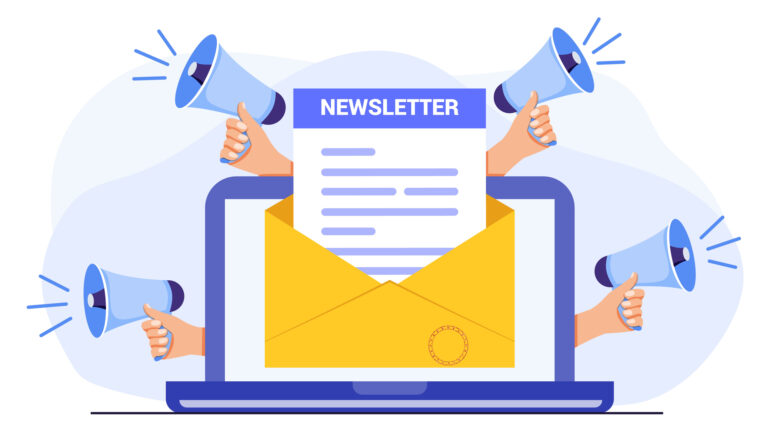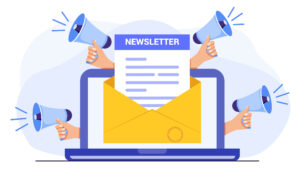Your subject line is the first (and sometimes only) chance to grab someone’s attention. With inboxes overflowing and algorithms filtering out low-engagement emails, a weak subject line can cost you potential leads, conversions, and sales. But the right approach can make all the difference. In this guide, we’ll break down the psychology behind subject lines that work, share proven formulas, and provide real-world examples to help you craft emails that people actually want to open.
The Psychology of Subject Lines – What Makes People Open Emails?
Every time someone checks their inbox, they are making split-second decisions about which emails to open and which to ignore. With so many messages competing for attention, people rely on instinct and quick judgment. A subject line that sparks interest, creates urgency, or feels personally relevant is far more likely to be opened than one that feels generic or unimportant.
Understanding the psychology behind what drives engagement can help you craft subject lines that naturally stand out. Here are the key triggers that influence open rates.
- Curiosity: People are wired to seek answers when something piques their interest. A subject line that hints at valuable information without revealing everything compels the reader to open the email to learn more.
- Urgency and Fear of Missing Out (FOMO): When people feel they have limited time to act, they are more likely to take immediate action. Subject lines that convey scarcity or a deadline create a sense of urgency that can drive engagement.
- Personalization: Emails that feel relevant to the recipient’s interests, behavior, or name make the message more compelling. People are more likely to engage when they feel like an email was written specifically for them.
- Social Proof and Authority: People trust recommendations, industry leaders, and popular trends. When a subject line references credibility, large numbers, or endorsements, it creates instant trust.
Top Formulas – Proven Methods for Writing Effective Subject Lines
Crafting a compelling subject line doesn’t have to be a guessing game. Certain formats have been tested across industries and consistently perform well. These formulas help you write subject lines that are engaging, clear, and optimized for higher open rates.
- The Question Format: Asking a question prompts curiosity and encourages interaction. People naturally want to find out the answer, making them more likely to open the email.
Example: “Struggling to increase open rates? Try this.” - The How-To Formula: This positions your email as a valuable resource by offering a clear solution to a problem. How-to subject lines work well for educational content and guides.
Example: “How to Write Subject Lines That Get Clicks.” - The List Format: Numbers make content feel structured and easy to digest. People love bite-sized insights, and list-based subject lines instantly communicate the value of your email.
Example: “7 Subject Line Mistakes That Are Killing Your Open Rates.” - The Urgency Formula: Creating a sense of urgency or scarcity makes readers feel like they need to act immediately or risk missing out. This is especially effective for promotions and event invitations.
Example: “Final Hours: 50% Off Sale Ends Tonight!” - The Personal Approach: Personalization makes emails feel more relevant to the recipient. Whether it’s using their name or tailoring the subject line to their interests, this formula increases engagement.
Example: “Michael, your exclusive offer is waiting!” - The Teaser Format: A little mystery piques curiosity and makes people want to open the email to see what’s inside. However, it’s important that the email delivers on the subject line’s promise.
Example: “The simple email trick top marketers swear by…”
Subject Lines for Different Types of Emails
Not all emails serve the same purpose, so your subject lines should reflect the intent behind the message. A promotional email, for example, should create excitement about a deal, while a transactional email should be clear and straightforward. Crafting subject lines that align with the type of email ensures that recipients immediately understand the value of opening it.
- Promotional Emails: These emails are designed to drive sales, so the subject line should highlight the offer and encourage action. Whether it’s a discount, exclusive deal, or limited-time sale, the subject line should create a sense of urgency or exclusivity to entice the reader to open it.
- Welcome Emails: First impressions matter, and a welcome email is your chance to establish a strong relationship with a new subscriber. The subject line should be warm, friendly, and reassuring, making the recipient feel valued while setting expectations for what they’ll receive from you in the future.
- Newsletters: A newsletter provides updates, insights, or educational content, and the subject line should immediately communicate why it’s worth reading. Instead of being vague, it should clearly state the main benefit, whether it’s industry news, helpful tips, or exclusive content.
- Re-Engagement Emails: When subscribers become inactive, a well-crafted re-engagement email can bring them back. The subject line should remind them why they signed up in the first place and offer a compelling reason to re-engage, whether it’s a personalized offer, a reminder of what they’re missing, or a simple invitation to reconnect.
- Transactional Emails: These emails confirm actions such as purchases, password resets, or shipping updates. Since they are expected and necessary, the subject line should be direct, clear, and informative. There’s no need for creativity here—just ensure the recipient immediately understands the purpose of the email.
- Event Invitations: Whether it’s a webinar, conference, or exclusive event, the subject line should generate excitement while emphasizing the importance of attending. If space is limited or the event is time-sensitive, mentioning that in the subject line can encourage quicker responses.
Examples – Strong and Weak Subject Lines
Let’s look at what works (and what doesn’t) when it comes to subject lines.
Strong Subject Lines (What Works & Why)
- “Hurry! 24-Hour Flash Sale – Up to 50% Off” Creates urgency and clearly highlights the value, prompting immediate action.
- “The #1 Mistake You’re Making in Email Marketing” Sparks curiosity while establishing authority, making the reader want to learn more.
- “David, your exclusive discount is waiting” Personalization makes the email feel relevant, while exclusivity increases engagement.
Weak Subject Lines (What to Avoid)
- “Newsletter #25” Too generic, providing no reason for the recipient to open the email.
- “Check this out!!!” Vague and unprofessional, with excessive punctuation making it look like spam.
- “Please open this email” Sounds desperate and does not communicate any real value to the reader.
Do’s and Don’ts for Writing Good Subject Lines
Before you hit send, keep these best practices in mind:
– Do keep it short and concise: Subject lines under 50 characters perform best.
– Do A/B test different subject lines: Small tweaks can lead to big results.
– Do avoid spam trigger words: Words like “free,” “cash,” and “urgent” can land you in the spam folder.
– Do make it mobile-friendly: Ensure subject lines display fully on small screens.
– Do write like a human: Avoid robotic or overly formal language.
– Don’t overpromise: If the subject line is misleading, your audience will lose trust.
– Don’t use all caps or excessive punctuation: It looks spammy and aggressive.
– Don’t send the same subject line repeatedly: If a subject line doesn’t work, test something new.
Final Thoughts
At the end of the day, your subject line is your email’s first impression, so make it count. A well-crafted subject line can be the difference between a thriving email campaign and one that goes unnoticed. Now is the time to put these strategies into action. Experiment with different formats, test what resonates with your audience, and refine your approach over time. The more you optimize, the better your open rates and the stronger your overall email marketing results will be.
Want to skyrocket your email open rates with irresistible subject lines? Start with NovaExpress.ai to craft targeted, high-impact emails that grab attention and drive results!









Thank you so much for your kind feedback!
Thank you for your feedback!
When your project benefits people, that’s the greatest reward. Wishing you success with your initiative!
Thank you for your kind words!
Reading this felt like watching the sunrise over a calm sea — filled with quiet awe and deep appreciation.